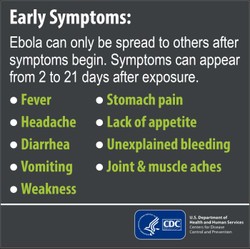Ebola virus disease became apparent to medical authorities when the first outbreak occurred in Africa near the Ebola River in 1976. Aside from laboratory accidents which generated a few human infections in Russia and England, all occurrences of this devastating disease have taken place in Africa. There have not been any case reports in the United States [1, 2].
The current 2014 outbreak is one of the largest ones in history, and it is the first occurrence in West Africa. These patients are in Guinea, Liberia, Nigeria, and Sierra Leone. It tends to occur in remote villages of Central and West Africa proximal to tropical rainforests [1, 2].




 The Reality of Aspirinon 05/24/2021
The Reality of Aspirinon 05/24/2021
 An Old Microbeon 03/31/2021
An Old Microbeon 03/31/2021
 Coronavirus and Mental Illnesson 02/14/2021
Coronavirus and Mental Illnesson 02/14/2021
 Acute Ischemic Strokeon 12/25/2020
Acute Ischemic Strokeon 12/25/2020


Comments